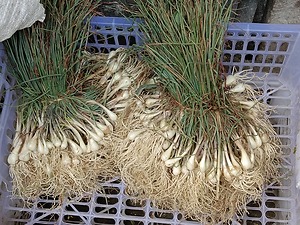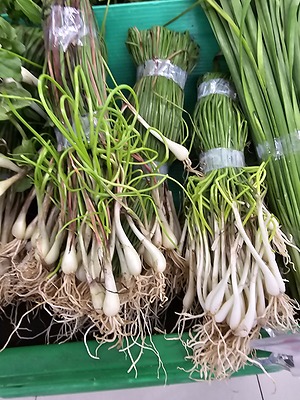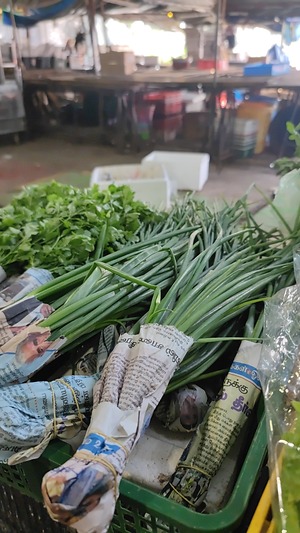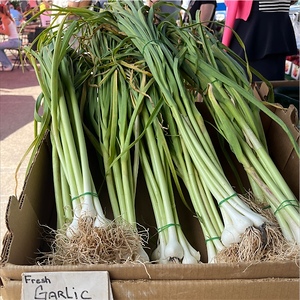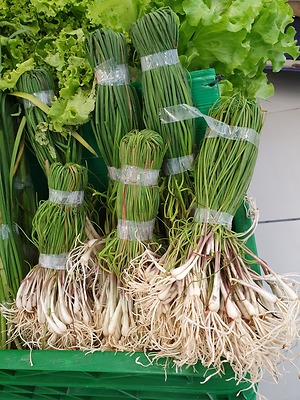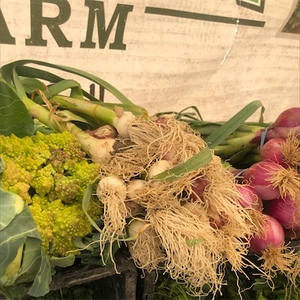

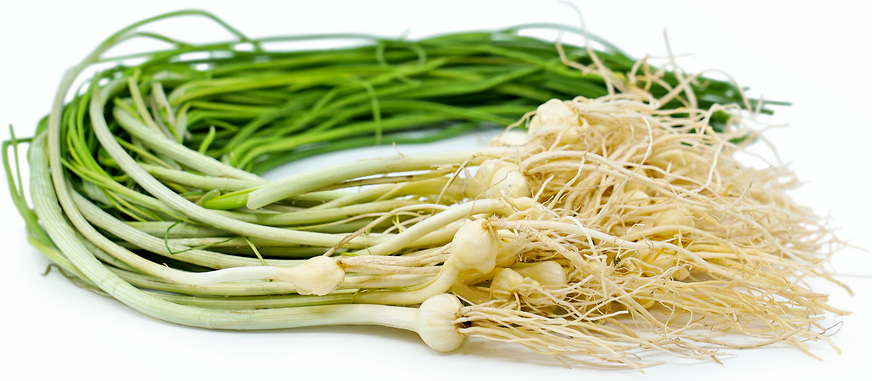
Field Garlic
Estimated Inventory, lb : 0
Description/Taste
Field garlic grows in bunches and produces long, narrow bluish-green leaves with pointed tips. The hollow leaves are thin measuring 2 to 3 millimeters across and grow from 30 centimeters up to 1 meter tall. The leaves are aromatic and give off a strong scent of onions. They grow from small, bright white bulbs, around 1 to 2 centimeters in diameter, that have tiny rootlets and produce bulbils. They offer a strong, garlic flavor.
Seasons/Availability
Field garlic is available in the spring and early summer months.
Current Facts
Field garlic is a wild perennial plant, botanically classified as Allium vineale. It is often hidden amongst grass lawns and fields, pastures and vineyards, and can be found on nearly every continent. Often, Field garlic isn’t discovered until being mowed down, revealed only by its strong scent. It is commonly known as Crow garlic in Australia and the United States or as Stag’s garlic and False garlic.
Nutritional Value
Field garlic contains vitamins A and C, potassium, manganese, calcium and selenium. It is a source of allicin, the compound responsible for the plant’s garlicky aroma and taste. It provides immune-boosting as well as antimicrobial and anti-inflammatory properties.
Applications
Field garlic can be used like scallions, onions or garlic in many applications. The young, tender leaves are used as a substitute for chives or green onions in salads and on baked potatoes. Use chopped leaves in potato salads, tuna or chicken salads, dressings or marinades. Use them to flavor oils or vinegar. The bulbs are used as a substitute in any recipe calling for garlic. Add chopped bulbs to egg dishes, risottos, soups, stews, or marinades. The leaves and bulbs can be pickled and preserved, and the leaves dried and stored for up to 6 months in an airtight container. Store fresh Field garlic in the refrigerator, wrapped, for up to a week.
Ethnic/Cultural Info
Due to how easily and quickly Field garlic can propagate, it has been declared an invasive species on several continents. In parts of Australia the sale of Field garlic is prohibited and in others there is legislation aimed at controlling and preventing its spread. In the United States it is considered an invasive species in several mid-western states.
Geography/History
Field garlic is native to Northern Africa, parts of the Middle East, and Europe. It was introduced to Britain, North America, Australia, and New Zealand where it quickly adapted and eventually became naturalized. The wild garlic variety prefers man-made or disturbed environments, so it can often be found growing in already-harvested grain fields or dormant vineyards. It prefers dry growing areas and thrives in meadows and fields far from wet soils. Field garlic can be spotted growing in the wild or at farmer’s markets in cooler, temperate climates. It is most common in New England and the mid-west in the United States.
Recipe Ideas
Recipes that include Field Garlic. One
| Farmer Gourmand |
|
Filet Mignon with Farro, Wild Garlic, and Sweet Corn |



